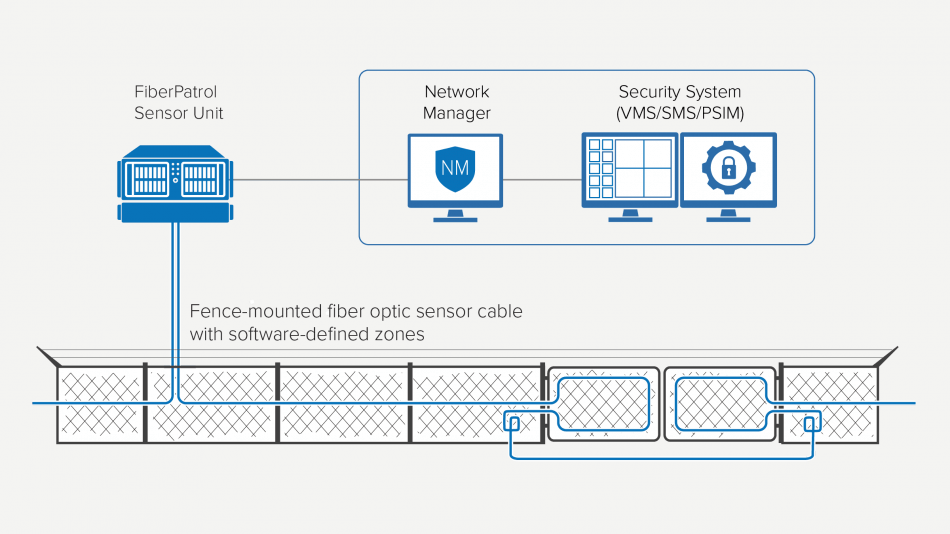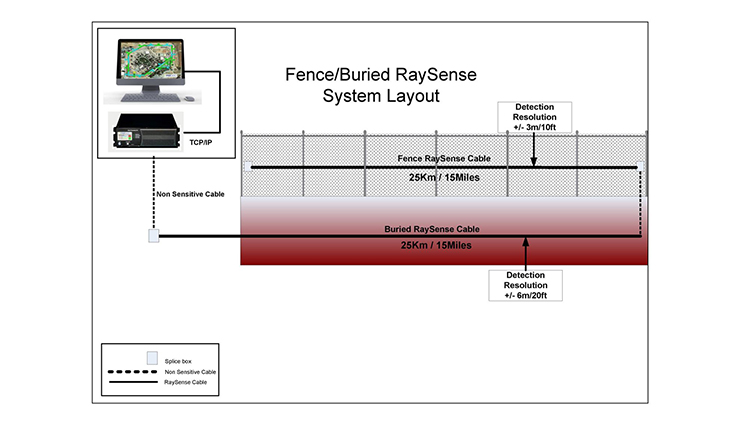Secure Your Residential Or Commercial Property With Dependable Fiber Optic Safety Solutions
In an era where safety and security hazards are significantly sophisticated, the requirement for reliable protection remedies is paramount. Fiber optic safety and security systems stand out by offering extraordinary integrity and performance, leveraging advanced light transmission innovation to boost monitoring abilities. security fibers. Understanding the ins and outs of fiber optic safety and security can illuminate the path to safeguarding your residential property extra properly.
Benefits of Fiber Optic Protection
Fiber optic safety options use a series of advantages that make them progressively crucial in today's digital landscape. One of one of the most considerable benefits is their premium bandwidth ability, which enables for the transmission of large amounts of data over lengthy distances without significant signal degradation. This capability is especially beneficial for safety and security systems that rely upon high-def video surveillance and real-time tracking.
Additionally, fiber optic cable televisions are inherently much more safe and secure than standard copper electrical wiring. They are unsusceptible to electromagnetic interference, making them less susceptible to hacking or eavesdropping. This improved safety and security is essential for shielding sensitive information and maintaining the honesty of security systems.
Additionally, fiber optics are much more durable and immune to ecological variables, such as moisture and temperature level fluctuations, making certain long-lasting reliability and lowered upkeep costs. The lightweight nature of fiber optic wires likewise simplifies installation procedures, enabling higher adaptability in system layout.
Just How Fiber Optic Solution Job
In contemporary safety applications, the procedure of fiber optic systems depends on the principles of light transmission via flexible glass or plastic fibers. These fibers are developed to lug light signals over fars away with minimal loss, making them excellent for sending data connected to safety tracking. The core of the fiber, surrounded by a cladding material, makes sure that light signals continue to be consisted of within the core with a sensation known as total internal reflection.
When incorporated right into security systems, fiber optic wires can transfer information from numerous sensing units, such as cams, motion detectors, and alarm systems, to a main tracking terminal. The high bandwidth ability of fiber optics enables the transmission of large amounts of information all at once, enabling real-time monitoring and timely feedback to possible threats.

Types of Fiber Optic Safety Solutions
Numerous kinds of fiber optic safety solutions have emerged to enhance monitoring and defense throughout various settings. One popular service is fiber optic boundary intrusion discovery systems (PIDS), created to monitor and safeguard property limits with the discovery of resonances and disturbances along fiber optic cable televisions. These systems give real-time signals, allowing prompt visit their website reactions to unauthorized gain access to efforts.
One more reliable service is fiber optic video security. This technology leverages high-def video cameras attached using fiber optic wires to transfer video data over cross countries without substantial loss of quality. This arrangement is particularly advantageous in extensive locations, such as airport terminals and commercial websites, where traditional copper wires may fail.
In addition, fiber optic sensors are progressively used for ecological tracking, discovering modifications in temperature level, stress, or acoustic signals that can indicate safety breaches or unsafe conditions. These sensing units use high sensitivity and accuracy, making them optimal for crucial infrastructure defense.

Installation and Maintenance Tips
Effective installation and upkeep of fiber optic protection services are vital for ensuring their ideal performance and long life. Fiber optic cables need to be directed safely, preventing sharp bends or spins that can endanger their integrity.
During installation, it is recommended to conduct complete screening of the system to validate that all moved here elements are operating properly. Regular maintenance checks should be scheduled to evaluate the fiber optic cords for any type of indications of wear or damage, along with to guarantee that connections continue to be safe and secure. Cleansing the ports regularly is also vital to prevent signal loss as a result of dirt click resources or debris.
Moreover, maintaining an updated inventory of mounted components and their specifications can help with less complicated troubleshooting and upgrades. By sticking to these installation and upkeep suggestions, homeowner can optimize the performance of their fiber optic protection remedies, ensuring a trusted defense against prospective hazards.
Comparing Expenses and Performance
When reviewing fiber optic safety and security services, recognizing the equilibrium in between expenses and performance ends up being paramount (security fibers). Organizations needs to think about the ahead of time investment, continuous maintenance expenses, and the long-lasting worth these systems offer. While fiber optic systems might require a higher first setup cost contrasted to typical copper electrical wiring, their resilience and decreased susceptibility to electromagnetic disturbance typically translate to lower upkeep expenses over time
Efficiency is one more critical aspect; fiber optic safety systems offer boosted data transmission rates and enhanced integrity. They can cover larger distances without signal destruction, making them optimal for expansive properties or remote places. The high data transfer capacity supports innovative safety and security applications, such as high-definition video clip security and real-time surveillance, which are important for thorough protection monitoring.
Eventually, the selection in between expense and effectiveness need to be led by specific security requirements and risk assessments. Organizations should evaluate their special requirements, taking into consideration elements like building size, security threats, and technical improvements. By carrying out a complete cost-benefit evaluation, stakeholders can make educated choices that line up with their safety purposes while making certain an audio investment in fiber optic technology.
Conclusion
To conclude, fiber optic security options use substantial benefits in regards to performance, reliability, and immunity to ecological disturbances. These systems boost surveillance capabilities and border safety, making them a reliable option for comprehensive protection. Although initial installation expenses may be higher, the long-term advantages, including decreased maintenance and exceptional capability, validate the financial investment. Ultimately, the adoption of fiber optic technology represents a forward-thinking approach to safeguarding residential or commercial properties versus developing safety and security risks.